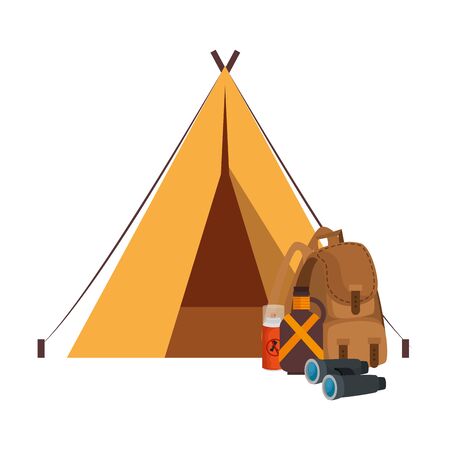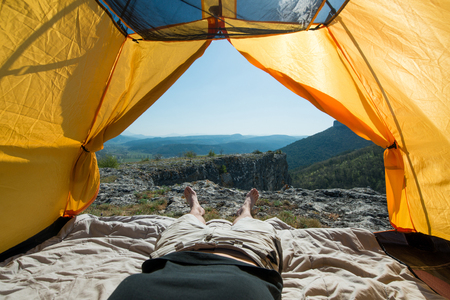1. Understanding the Unique Challenges of Indian Mountain Camping
When it comes to adventure and camping, the Indian mountain regions stand apart with their own set of challenges and rewards. The mighty Himalayas in the north and the lush Western Ghats in the south offer a diverse array of terrains, each presenting unique conditions that campers must be prepared for. In Himachal Pradesh, Uttarakhand, Sikkim, Ladakh, and Arunachal Pradesh, altitudes can soar above 3,000 meters, resulting in bone-chilling nights even during peak summer months. Meanwhile, the Western Ghats—stretching across Maharashtra, Karnataka, Kerala, and Tamil Nadu—may not rise as high but are notorious for their heavy monsoon downpours and rapidly changing temperatures.
Campsite culture in India is also deeply influenced by local traditions. In the Himalayan belt, many campsites are set up by local guides familiar with both terrain and weather patterns. Shared tents and community campfires are common, emphasizing warmth and camaraderie. On the other hand, wild camping along the misty Western Ghats often means dealing with leeches, damp ground, and sudden cold snaps at higher elevations like Munnar or Kudremukh. All these factors make it clear that ordinary sleeping bags may not be up to the task—instead, sleeping bags specifically engineered for Indian mountain regions are a necessity for ensuring safety and comfort under these challenging conditions.
Key Features Needed for Indian Mountain Sleeping Bags
When preparing for an adventure in the Indian Himalayas, Western Ghats, or Eastern ranges, your sleeping bag must be equipped for diverse and often unpredictable conditions. Below are the essential features every mountain trekker should look for in a sleeping bag tailored to Indian terrains.
Temperature Ratings for Indian Winters
The Indian mountain climate varies dramatically, with winter temperatures in Himachal Pradesh, Uttarakhand, Sikkim, and Arunachal Pradesh dropping well below freezing. It is crucial to choose a sleeping bag with an appropriate temperature rating. For Himalayan treks like Kedarkantha or Sandakphu, bags rated between -10°C to -20°C are recommended during peak winter months. For moderate altitudes or summer treks in Kashmir or Himachal, a comfort rating of 0°C to -5°C is usually sufficient.
| Region | Recommended Temp Rating | Trekking Season |
|---|---|---|
| Himalayas (High Altitude) | -10°C to -20°C | December – February |
| Western Ghats (Moderate Altitude) | 0°C to -5°C | November – March |
| Northeast Mountains | -5°C to -10°C | October – March |
Moisture Resistance for Monsoon Conditions
Monsoon rains are common in Indian mountains from June to September, making moisture resistance a critical feature. Look for sleeping bags made with water-repellent outer shells and quick-drying insulation materials such as synthetic fibres. Down-filled bags with DWR (Durable Water Repellent) treatment also perform well but require extra care. A waterproof compression sack is highly advised for added protection during transport.
Adaptable Designs for Local Trekking Styles
Indian trekking routes often involve teahouse stays, tent camping, or even open bivouacs on platforms like the Chadar Trek. Hence, versatility in design matters:
- Mummy Shape: Provides maximum warmth retention for cold nights.
- Rectangular Shape: Offers more space and comfort for warmer conditions or guesthouse usage.
- Two-way Zippers: Allow ventilation adjustment – handy in fluctuating temperatures.
- Pillow Pockets & Extra Padding: Enhance sleep quality after long hiking days.
- Packing Size & Weight: Lightweight and compact options suit long multi-day treks where every gram counts.
Quick Checklist for Indian Mountain Sleeping Bags:
- Sufficient insulation for sub-zero temperatures
- Water-resistant shell and inner lining
- User-friendly zippers and adjustable hoods
- Packs small yet provides enough space when unfolded
- Suits both tent and basic lodge accommodation styles
Selecting a sleeping bag with these India-specific features ensures safety and comfort whether you’re summiting Stok Kangri, exploring the Nilgiris, or camping near Tawang Lake. These details can make all the difference in your mountain experience.

3. Local Innovations and Indigenous Materials
When it comes to sleeping bags designed for the Indian mountain regions, local innovation is a game changer. Indian manufacturers are increasingly integrating indigenous materials and time-tested design features to create gear that feels at home in the Himalayas or Western Ghats. Yak wool, known for its exceptional warmth and breathability, has become a sought-after insulation material in high-altitude sleeping bags. This natural fibre, sourced from Himalayan yak herders, provides thermal comfort during freezing Ladakhi nights while keeping the weight of the sleeping bag manageable for trekkers.
Another uniquely Indian touch comes from khadi, the handspun and handwoven fabric celebrated for its durability and eco-friendliness. Sleeping bags lined with khadi offer not just warmth but also a soft, skin-friendly feel — perfect after a long day’s trek through Sikkim or Himachal. Some brands now fuse khadi with water-resistant treatments to ensure your sleeping bag remains dry even in monsoon-prone regions.
Design-wise, many sleeping bags draw inspiration from traditional Himalayan mountaineering gear. Features such as extra-wide hoods (inspired by the classic chugha cloak) and reinforced footboxes reflect the needs of Indian campers who may sleep with shoes on in frigid conditions. Side zippers with robust toggles echo the practicality found in local winter jackets, making midnight exits less fumbly when nature calls on chilly nights. These thoughtful adaptations not only honour regional heritage but also deliver genuine performance benefits tailored for India’s diverse mountain environments.
4. How to Choose the Best Sleeping Bag for Himalayan Adventures
When planning a trek through India’s majestic mountain regions—be it Ladakh, Uttarakhand, or Sikkim—selecting the right sleeping bag is as crucial as picking your route. Indian trekkers have unique needs influenced by local weather, altitudes, and cultural practices. Here are practical tips to help you choose a sleeping bag that meets both your adventure goals and Indian sensibilities.
Consider the Region and Season
The Himalayan belt spans diverse climates. For Ladakh’s bone-chilling nights, opt for bags rated at least -10°C to -20°C. In Uttarakhand and Sikkim, summer treks may allow for lighter bags, but always be prepared for sudden weather shifts.
| Region | Recommended Temperature Rating | Preferred Bag Shape |
|---|---|---|
| Ladakh | -10°C to -20°C | Mummy or Hybrid (for warmth) |
| Uttarakhand | -5°C to -15°C | Mummy or Rectangular (flexibility) |
| Sikkim | -5°C to -12°C | Mummy (compact & warm) |
Prioritize Insulation Type: Synthetic vs Down
Down bags are lighter and packable—a boon for high-altitude treks—but synthetic fills perform better in wet monsoon conditions common in Indian mountains. If your trek could see rainfall or snowmelt, synthetic insulation offers reliable warmth even when damp, which is a major plus for Indian trekkers.
Cultural Considerations: Food & Footwear Inside Tents
Indian trekkers often prefer to eat inside tents due to unpredictable weather, so easy-to-clean sleeping bags are valued. Some also keep footwear inside the tent; choose a bag with a water-resistant foot box or an extra liner to maintain hygiene and warmth.
Select User-Friendly Features for Indian Terrain
- Zipper Side: Right-hand zip is popular in India for ease of entry/exit on typical tent layouts.
- Pillow Pocket: Handy for stowing a shawl or scarf, which many Indian trekkers carry.
- Adjustable Hood: Helps retain heat during cold Himalayan nights.
- Stuff Sack: Compact size is crucial for those using Indian railway travel or shared jeeps between trekking points.
Check Local Availability & After-Sales Service
Choose brands with good service networks in India, especially in trekking hubs like Dehradun, Manali, or Gangtok. This ensures quick repairs or replacements if needed during extended expeditions.
By aligning your choice with these regional and cultural preferences, you’ll be ready to enjoy the true spirit of Himalayan trekking—comfortably and safely nestled in a sleeping bag made for India’s mountains.
5. Maintenance, Care, and Local Buying Tips
When it comes to sleeping bags specially designed for Indian mountain regions, proper care ensures your gear remains reliable for every Himalayan or Sahyadri adventure. Here’s how you can maintain your investment and make smart local buying decisions:
Cleaning and Storage in the Indian Context
India’s diverse climates—from damp monsoon conditions in Himachal to dry cold in Ladakh—demand special attention when cleaning sleeping bags. Always air out your sleeping bag after each trip, especially if you’ve camped in humid or misty areas. For a deeper clean, use mild detergent and cold water, preferably hand-washing to avoid damaging insulation. Avoid direct sunlight during drying; instead, choose a shaded, well-ventilated spot to prevent fabric degradation common in strong Indian sun. Store your sleeping bag loosely in a cotton storage sack or pillowcase rather than its compression bag to maintain loft and warmth—a tip seasoned trekkers from Uttarakhand swear by.
Buying Advice: Trusted Indian Retailers & Brands
When purchasing, opt for reputable retailers and established Indian brands known for mountain-tested gear. Outdoor specialists like Decathlon India, Wildcraft, and Adventure Worx offer models tailored for sub-zero conditions in Jammu & Kashmir as well as lighter options for Western Ghats treks. If possible, visit flagship stores in cities like Bengaluru or Delhi where staff are familiar with regional requirements. Check for ISI certification or user reviews from local hiking communities on platforms like IndiaHikes or Trek the Himalayas to ensure authenticity.
Quick Tip for Bargain Hunters
During off-season sales—typically post-monsoon—you may find quality sleeping bags at discounted rates both online and at physical stores. Don’t forget to check warranty terms; many trusted Indian brands provide after-sales service which is invaluable if you plan frequent trips into the rugged mountains.
Final Thought
A well-maintained sleeping bag not only keeps you warm but becomes a dependable companion on every chai break under the stars. Invest wisely and care locally—the Indian way!
6. Voices from the Mountains: Experiences of Local Campers
When it comes to spending a night under the Himalayan stars, no one knows the challenges better than those who have trekked through Ladakh’s frozen valleys or camped by the alpine lakes of Uttarakhand. Indian campers and trekking families have been putting regionally-designed sleeping bags to the test, and their experiences speak volumes about both comfort and cultural connection.
Anecdotes from Experienced Trekkers
Rajesh Sharma, a seasoned trekker from Himachal Pradesh, recalls his adventure in Spiti Valley: “In the past, I used imported sleeping bags that left me shivering by midnight. The new Indian-made bag with extra insulation for sub-zero nights made all the difference – I woke up fresh and ready for the trails.” Many like Rajesh appreciate the thoughtful inclusion of extended hoods and full-length zippers that allow flexibility for chai breaks at dawn.
Family Camping: Comfort for All Ages
The Joshi family from Uttarakhand shares their experience camping near Nainital: “Our kids are not used to harsh cold, but these locally-designed sleeping bags kept them warm without making them feel suffocated. The material is soft, and we loved the subtle traditional patterns on the lining – it reminded us of home.” Such feedback highlights how these products blend technical performance with familiar cultural motifs.
User Feedback: Practicality Meets Tradition
Beyond warmth, users have praised features like waterproof exteriors and easily washable fabrics – a must after monsoon treks or Holi celebrations in camp. “It’s practical for Indian conditions,” says Priya Menon, who leads women’s trekking groups in Sikkim. “The bag dries quickly after rain, and the compact size fits perfectly in our rucksacks.” These voices confirm that sleeping bags tailored for India’s mountains are not just gear—they’re part of a growing movement towards local innovation rooted in real-world needs.

